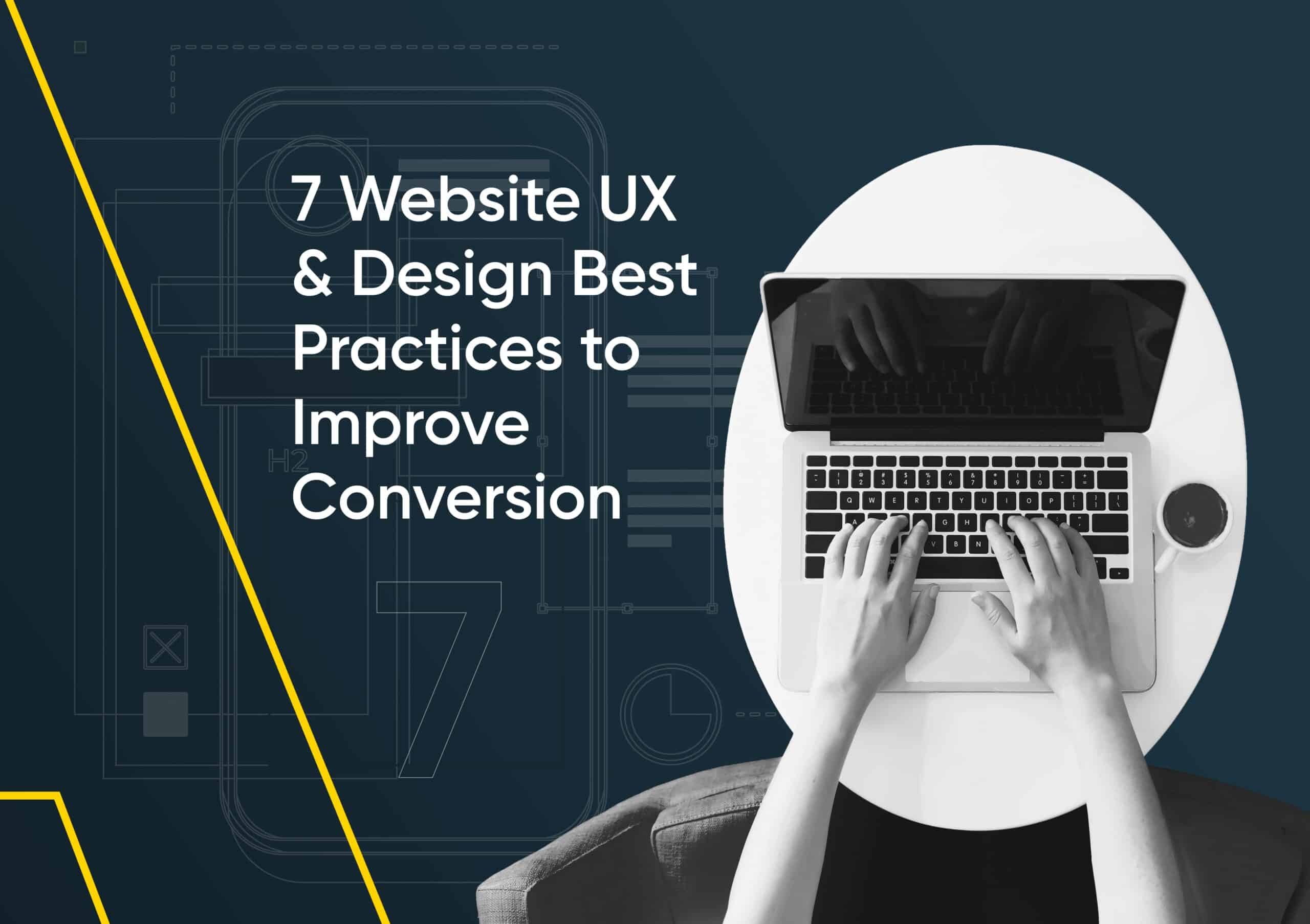So, you’ve attracted a prospective customer to your website – great news!
But what are they seeing once they arrive?
Outdated designs? Frustrating menus? Overly complex user journeys?
First impressions are really, really important when it comes to website conversion. If your website UX (user experience) and design are poor, people aren’t going to linger, and they’re almost certainly not going to convert.
We’re all impatient (yes, you too). We’ve grown accustomed to getting what we want, when we want it. If a prospective customer navigates to your website, it’s usually because they want something; they’re not there for fun.
It’s your website’s job to give them the information they want in the most convenient manner possible. If it’s not doing this, it’s not functional.
In this blog, we’ll run through 7 key website UX and design best practices to help boost your website’s conversion rates.
1. Keep it simple, stupid!
Overly complex, flashy designs often come with that ‘wow’ factor, but can quickly exasperate visitors if used too much.
Generally speaking, ease of use is always more important than aesthetics. Style over substance is a real problem that plagues website design. Your website is here for a purpose; its design should:
- Reduce friction for the customer
- Use recognisable, easy to discern colours
- Consider density of text (too much text all at once can be overwhelming)
- Feature varied modules to retain interest and function
- Dynamically move where relevant (too much movement can be distracting)
The best websites are the simple ones. Get to your point quickly and efficiently – visitors will appreciate it!
2. Prioritise your visual hierarchy
Your visual hierarchy refers to the arrangement and prioritisation of elements on your website.
Put simply, good visual hierarchy should draw users’ attention and help them to navigate and understand your content.
You can use visual hierarchy to guide visitors to your site to the most important information and your calls to action. You can do this using:
- Size – Larger elements naturally draw more attention than smaller ones. Make your important headers and buttons bigger – it helps!
- Colour – Contrasting/vibrant colours serve to draw attention to specific elements. This is especially useful for highlighting CTA buttons.
- Alignment – Consistent alignment of elements helps establish a sense of order (and people generally like order!). Good alignment makes your website more legible.
- Typography – Font styles, weights and styles are really important. You want to balance unique style with readability. Fancy fonts are pointless if they’re hard to read!
3. Easy nav, easy life
Your website’s navigation ties your pages together.
Messy, hard-to-use navigation bars will almost immediately turn a user off. Make sure that pages are clearly defined from one another, and it’s obvious where links lead.
We also recommend cutting down on the number of options in your nav. Again, simplicity is key. Many businesses make the mistake of cramming everything they do into their navigation (this never works).
4. Keep your branding consistent
Your brand sits at the core of your business. You need to ensure that your webpages, campaigns and comms are all branded consistently.
There’s nothing quite as confusing as working your way through a website that’s branded like Joseph’s Technicolour Dreamcoat.
Many businesses find that their brand evolves over the years, as does their website. This can often lead to a website with a hodgepodge brand, which can turn people away.
5. Optimise for responsiveness
A responsive website automatically adjusts itself to fit different-sized screens and views. As you stretch/compress a website, it should still fit in a logical way. This means that different versions of your website look consistent across desktop, mobile and tablet.
Not only this, but Google rates websites on their mobile responsiveness and load times.
If your website performs poorly on mobile, Google won’t rank it as highly. Not only this, but it’ll be horrible to use for mobile users.
Take note: mobile accounted for 58.7% of average website traffic in 2023. If you’re not optimising for mobile, you’re alienating a significant portion of your users.
6. Clear, concise copy
Words are great.
But using too many can be overwhelming.
Get to your point as quickly and clearly as possible. Avoid overflowing your website with too much content.
Produce blogs & guides for the users who want to know more, drive everyone else to contact you.
7. Test, test, test!
You’ll rarely get your website spot on your first attempt.
We’re website design and UX experts, and we often need to look at the data of a website to understand what’s working, and what needs to change.
A/B testing can be used to determine what new ideas are working. This is a process that is ongoing. Websites are constantly evolving alongside your business and landscape as you scale and diversify your offerings.
Looking to improve your website’s UX and design?
When was the last time your website got some love?
Too long, we bet! It’s time to talk to our website UX and design experts at Catalyst.
We work closely with growing SMEs to create websites that:
- Drive more traffic
- Boost conversion rates
- Help grow businesses

